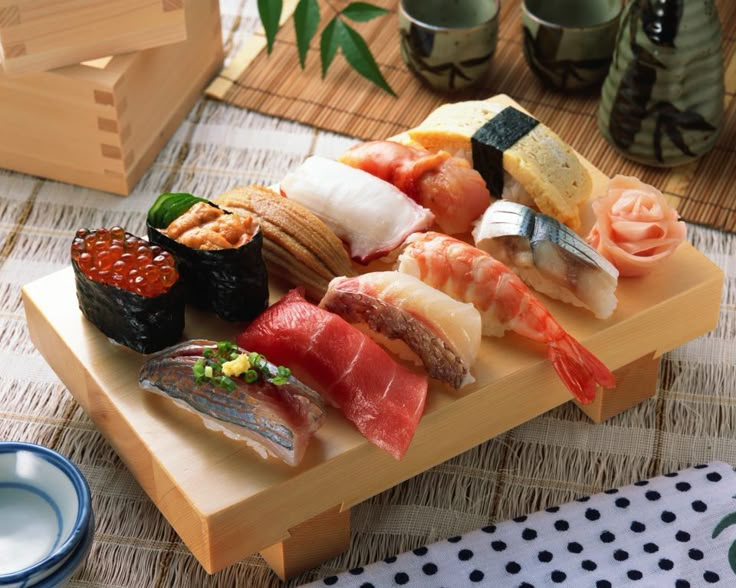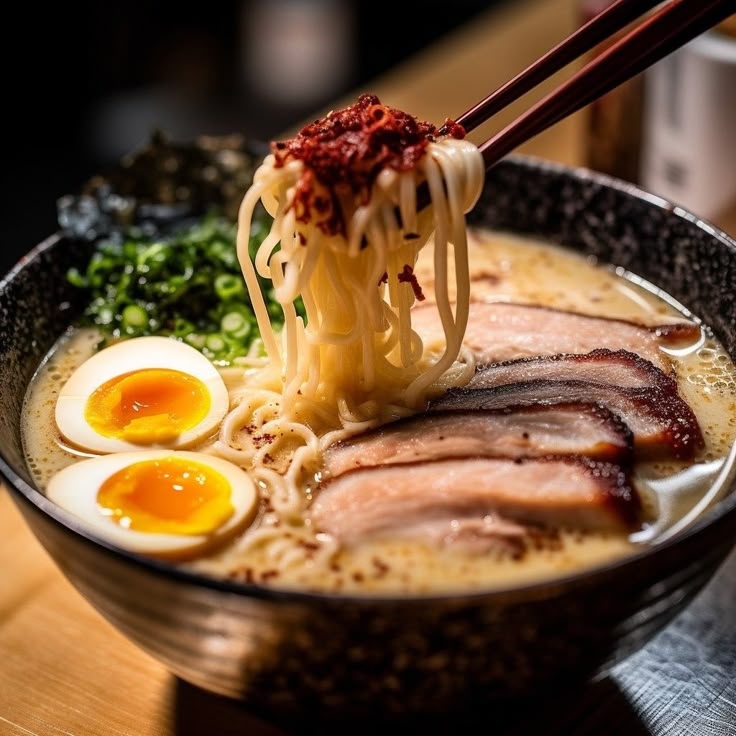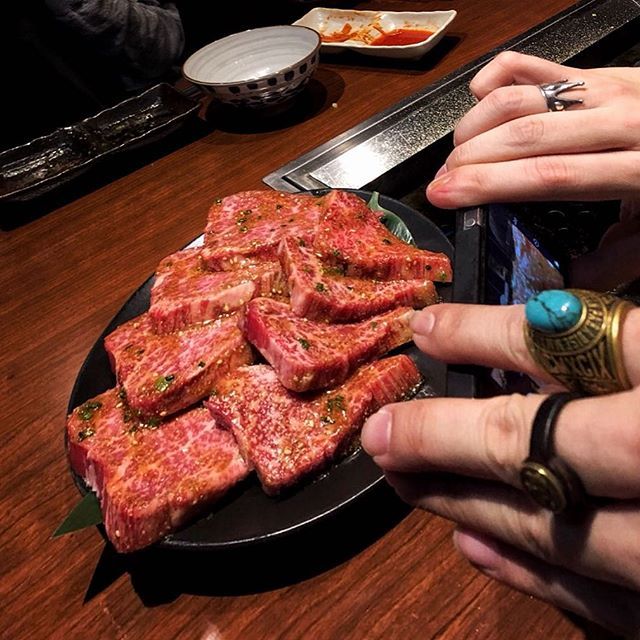When you think of Japanese food, what comes to mind? For decades, the answer was almost universally “sushi.” In recent years, a steaming, savory bowl of ramen has stormed the global stage, becoming a culinary icon in its own right. But to stop there would be like visiting an art museum and only looking at two paintings. The landscape of Japanese cuisine is vast, vibrant, and deeply woven into the fabric of its culture and history.
Oh, but there’s so much more. There’s the smoky allure of yakitori (grilled chicken skewers), the comforting warmth of kare-raisu (curry rice), the interactive sizzle of yakiniku (grilled meat), and the soul-soothing elegance of sukiyaki. We have crispy, deep-fried tonkatsu pork cutlets, delicate tempura, hearty hanbaagu steaks, and the satisfying bite of gyoza dumplings. And we could go on and on, but we have to stop somewhere.
This guide will take you on a journey through these beloved dishes. We won’t just tell you what they are; we’ll explore where they came from, the different ways they’re enjoyed, and the cultural stories they tell. Through these famous foods, you’ll gain a richer understanding of Japan itself. So, let’s dig in.
1. Sushi (寿司): The Quintessential Icon

Let’s start with the undisputed global ambassador of Japanese cuisine: sushi. At its core, sushi is not simply raw fish; it is a dish of vinegared rice, known as shari, combined with other ingredients called neta. While seafood, often raw, is the most common neta, it can also include cooked items, vegetables, or egg.
A Bite of History:
The modern form of sushi, nigirizushi (hand-pressed sushi), was born in the bustling streets of Edo (modern-day Tokyo) in the early 1800s. It was the original fast food, created by a chef named Hanaya Yohei to provide a quick, delicious meal for people on the go. Interestingly, the pieces were originally two or even three times the size of what we see today—what some might jokingly call “Texas-sized.”
Cultural Evolution:
For generations, sushi was a luxury, a special meal reserved for celebrations, much like a fine steakhouse dinner in the West. My wife recalls that growing up in the 1980s, her family only ate sushi on special occasions. Today, its accessibility has exploded. You can find it at high-end restaurants where chefs prepare it piece by piece in front of you (omakase style), grab it off a conveyor belt at a kaiten-zushi shop, buy a pre-made platter at a grocery or convenience store, or even have it delivered to your door.
The Many Faces of Sushi:
-
Nigirizushi (握り寿司): A slice of neta (topping) pressed by hand onto a small mound of vinegared rice. This is the classic form.
-
Makizushi (巻き寿司): Known as sushi rolls, where rice and fillings are rolled inside a sheet of nori (seaweed) and then sliced. The nori is on the outside.
-
Uramaki (裏巻き): An “inside-out” roll, with the nori on the inside and the rice on the outside. The famous California Roll, an invention by a Japanese chef in North America in the 1970s, is a prime example of uramaki. While ubiquitous in the West, it’s a rare find in Japan.
-
Temaki (手巻き): A “hand roll,” where nori is shaped into a cone and filled with rice, fish, and vegetables. This is the one form of sushi commonly made in Japanese homes, especially for parties.
-
Chirashizushi (ちらし寿司): “Scattered sushi,” a bowl of sushi rice topped with a colorful assortment of various neta.
-
Inarizushi (稲荷寿司): A simple but delicious pouch of sweet, fried tofu skin stuffed with vinegared rice.
A Note on Etiquette:
There are a few “rules” to enjoying sushi that enhance the experience. First, it’s perfectly acceptable to eat nigirizushi with your hands. Second, avoid mixing wasabi into your soy sauce. The chef has already placed the perfect amount of wasabi inside the sushi, and mixing it diminishes its distinct, pungent flavor. If you want more, simply dab a small amount onto the neta. Finally, when dipping, turn the sushi over and dip the fish side, not the rice side. This prevents the rice from soaking up too much soy sauce and falling apart, which would overpower the delicate flavor of the fish.
2. Ramen (ラーメン): The Ultimate Comfort Food

Ramen is a noodle soup dish that has captured hearts worldwide. It consists of Chinese-style wheat noodles served in a broth, topped with a variety of ingredients.
From China to Japan:
Ramen’s roots trace back to Chinese wheat noodle dishes brought to Japanese port cities like Yokohama in the 19th century. However, it was in the post-World War II era that ramen truly took root. Sold from mobile food carts called yatai, it offered a cheap, nutritious, and filling meal for a recovering nation.
A Nation of Broths:
As ramen’s popularity spread, distinct regional variations emerged, primarily defined by the soup base. The four main types are:
-
Tonkotsu: A rich, creamy, and opaque pork bone broth, famous in the Kyushu region.
-
Shoyu: A clear brown broth based on chicken, vegetables, and a generous amount of Japanese soy sauce. This is the classic Tokyo style.
-
Shio: A light, clear, and salty broth, often considered the oldest type. It’s popular in places like Hakodate in Hokkaido.
-
Miso: A broth flavored with fermented soybean paste (miso), creating a complex, nutty, and slightly sweet flavor. It originated in Sapporo, Hokkaido.
Beyond these, you’ll find other styles like Tsukemen, where cold noodles are dipped into a separate bowl of hot, concentrated broth, and Mazesoba, a “mixed noodle” dish with no broth but a flavorful sauce at the bottom of the bowl.
Ramen Culture:
Traditionally a working-class food, ramen shops are often designed for a quick “eat and go” experience. Many use a vending machine system where you purchase a ticket for your order before sitting down. While it remains an affordable staple, in recent decades, chefs have elevated ramen into a gourmet art form, with shops boasting Michelin stars and customers lining up for hours to taste a master’s creation.
3. Yakiniku (焼肉): The Joy of Grilling

Yakiniku literally means “grilled meat” and refers to the Japanese style of cooking bite-sized pieces of meat and vegetables on a tabletop grill.
A Post-War Innovation:
Like ramen, yakiniku became widespread in the post-war period. With prime cuts of beef and pork being prohibited commodities, restaurants, many run by Zainichi Koreans, began serving up grilled offal—entrails and internal organs like liver and heart—which were affordable and delicious when grilled. These were known as horumonyaki. As the economy recovered, choice cuts like karubi (boneless short rib) and rosu (loin) became the standard, and yakiniku evolved into the celebratory meal we know today.
The Social Experience:
Yakiniku is a profoundly social meal. It’s less of an everyday dish and more of a social gathering, similar to a barbecue in North America. Whether at a restaurant with built-in grills or at home with a special electric grill, the fun is in cooking the food together. It’s a messy affair, with oil and smoke filling the air, but that’s part of the charm. The grilled pieces are typically dipped in a sweet and savory soy-based sauce called yakiniku no tare.
4. Hanbaagu (ハンバーグ): A Western Dish, Perfected
Don’t confuse this with an American hamburger. The Japanese hanbaagu is a juicy, bunless Salisbury-style steak, a beloved example of yōshoku (Western-influenced Japanese cuisine).
German Roots, Japanese Heart:
The dish gets its name from Hamburg, Germany, the purported origin of the hamburger steak. Introduced to Japan during the Meiji period (1868-1912), it was adapted to Japanese tastes. The patty is usually a blend of ground beef and pork, mixed with minced onions, egg, and panko (Japanese breadcrumbs) for a soft, tender texture.
It’s a staple in family restaurants, often served sizzling on a cast-iron plate (teppan) with a rich demi-glace sauce. It’s also a favorite home-cooked meal, especially for children.
5. Tonkatsu (とんかつ): The Crispiest Cutlet
Tonkatsu is a breaded, deep-fried pork cutlet that is a masterpiece of texture and flavor.
A Journey of a Word:
The name itself tells a story. Ton (豚) means pork, and katsu is a shortened version of katsuretsu, the Japanese phonetic rendering of the English word “cutlet,” which in turn comes from the French côtelette. Originally offered in a Ginza restaurant in 1899, the dish was initially a thin piece of meat. It was later adapted to use a thicker cut of pork and the tempura-inspired method of deep-frying, creating the juicy, modern tonkatsu.
The Good Luck Meal:
Katsu is also a homophone for the Japanese word for “to win” (勝つ). Because of this, tonkatsu is a popular good-luck meal eaten before important exams or sporting events. It’s typically served with shredded cabbage, rice, miso soup, and a thick, sweet-and-sour Tonkatsu sauce.
6. Yakitori (焼き鳥): The Soul of the Izakaya
Yakitori, meaning “grilled bird,” refers to skewered chicken, though the term is often used more broadly for any skewered and grilled item.
From Wild Birds to Broilers:
During the Meiji era, when chicken was still expensive, yakitori stalls would grill off-cuts and wild birds. The modern form of yakitori took off in the 1960s with the introduction of broiler chickens from the U.S., making chicken meat affordable and widely available.
Today, yakitori is the quintessential food of the izakaya (Japanese pub). It’s the perfect accompaniment to a cold beer or sake. Skewers come with every part of the chicken imaginable, from thigh meat (momo) and breast (mune) to skin (kawa), gizzards (sunagimo), and heart (hatsu). You can usually choose between two seasonings: shio (salt) or tare (a sweet soy-based glaze).
7. Curry Rice & Other Favorites
Of course, the list doesn’t end there. Here are a few more essentials of the Japanese table:
-
Curry Rice (カレーライス): Introduced by the British Royal Navy in the 19th century, who had adapted it from their Indian colonies, Japanese curry is a thick, mild, and slightly sweet stew served over rice. It’s a national comfort food, a staple of school lunches, and easily made at home using roux blocks.
-
Gyoza (餃子): Japanese pan-fried dumplings, originating from Chinese jiaozi. The Japanese version, brought back by soldiers after WWII, is typically made with a thinner wrapper and a more garlicky pork and cabbage filling. It’s a perfect side dish for a bowl of ramen.
-
Soba (そば): Thin buckwheat noodles. A healthy and historic dish, soba can be served hot in a soup or cold with a dipping sauce (zaru soba). It’s an iconic fast food, with tachi-gui (stand-up) soba shops found in and around nearly every train station.
-
Tempura (天ぷら): A dish of seafood and vegetables lightly battered and deep-fried to perfection. Introduced by the Portuguese in the 16th century, the technique was refined by the Japanese to achieve its signature light and crispy texture. It’s often served as a topping for soba or as an elegant, multi-course meal on its own.
Conclusion: A World of Flavor
From the refined elegance of a sushi counter to the boisterous fun of a yakiniku grill and the simple comfort of a bowl of curry rice, Japanese food is a reflection of the country’s unique ability to both preserve tradition and embrace innovation. Each dish carries a story—of trade, of adaptation, of making do in hard times, and of celebrating the good times.

